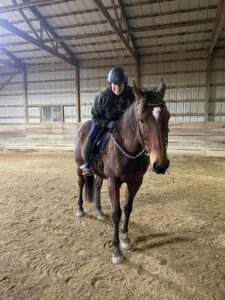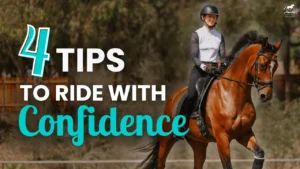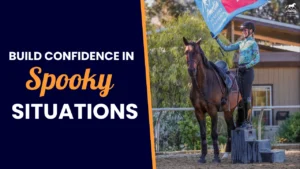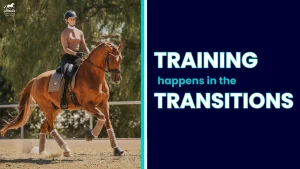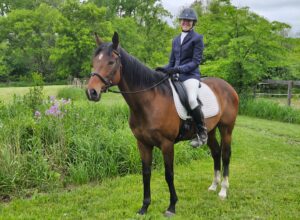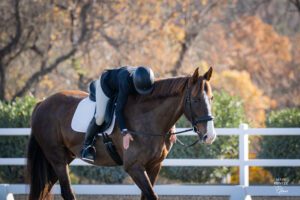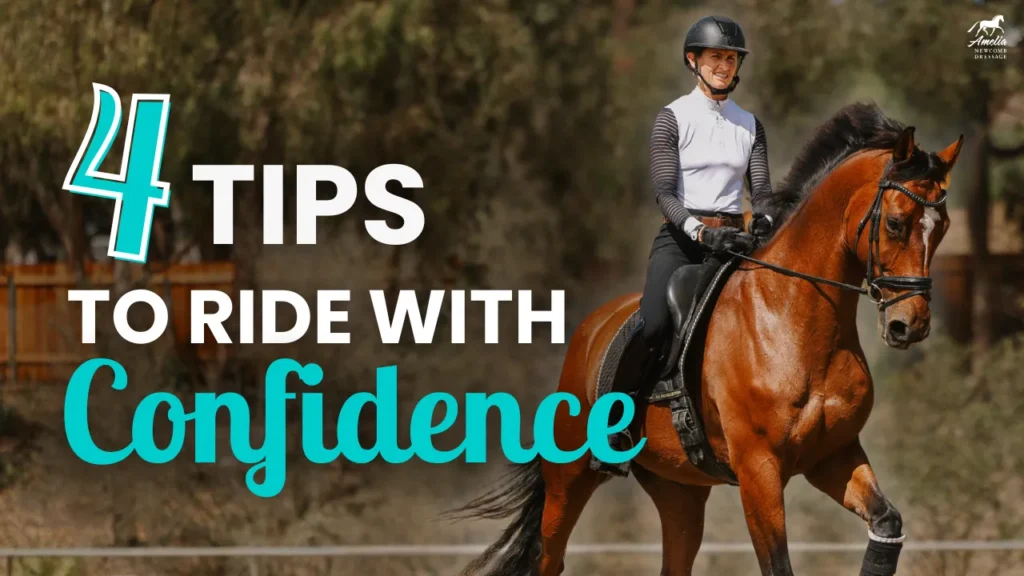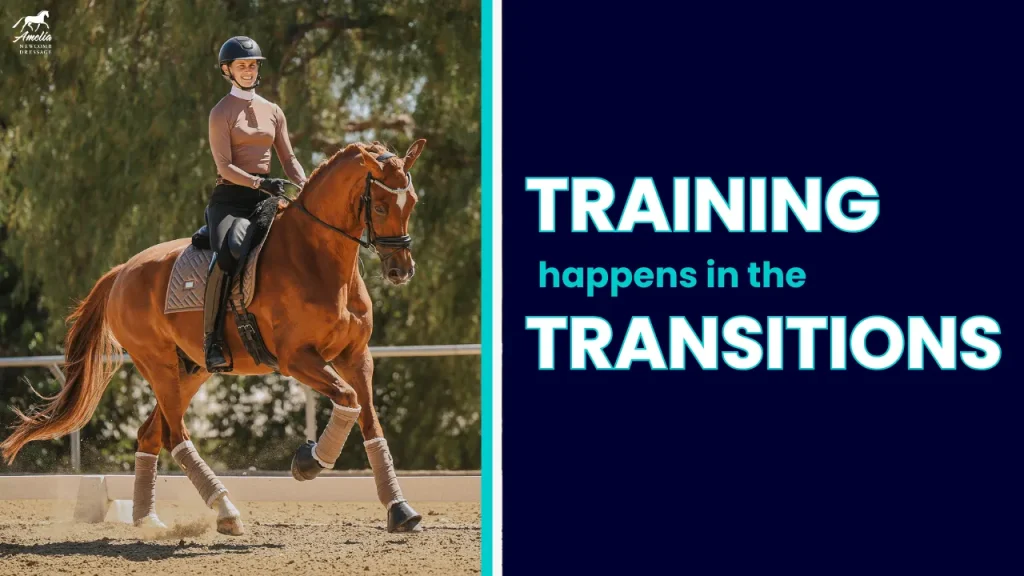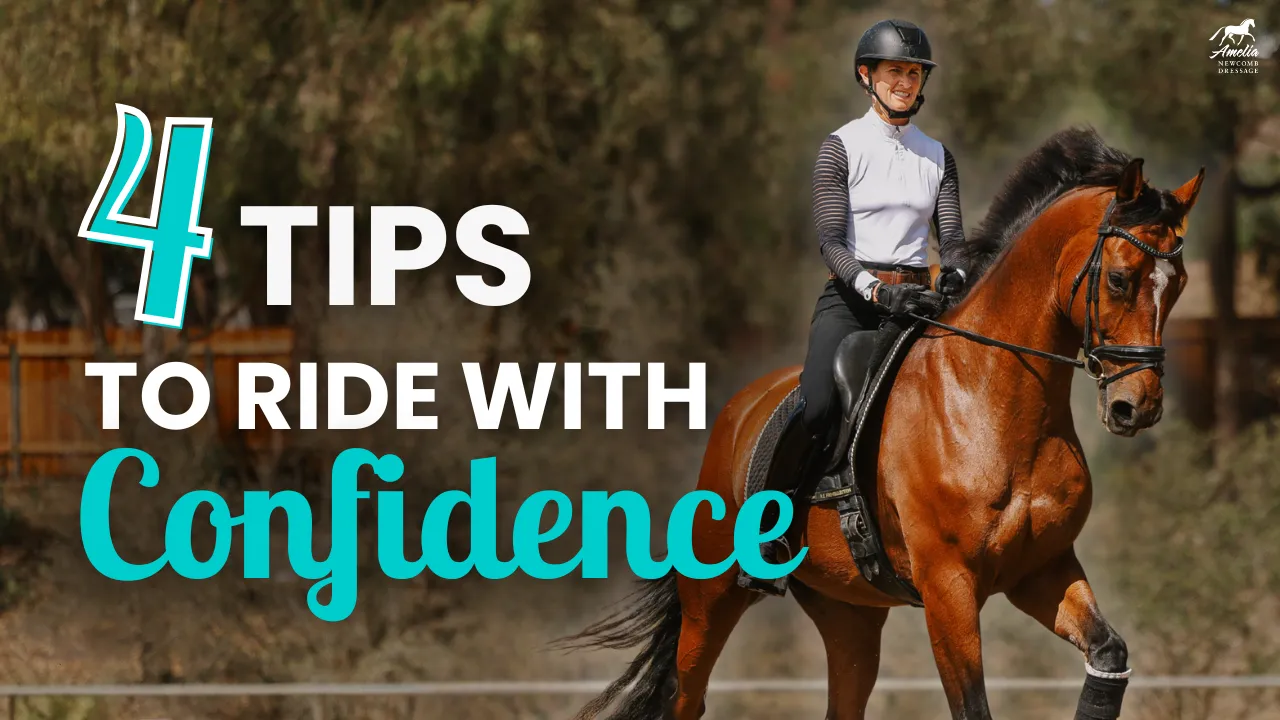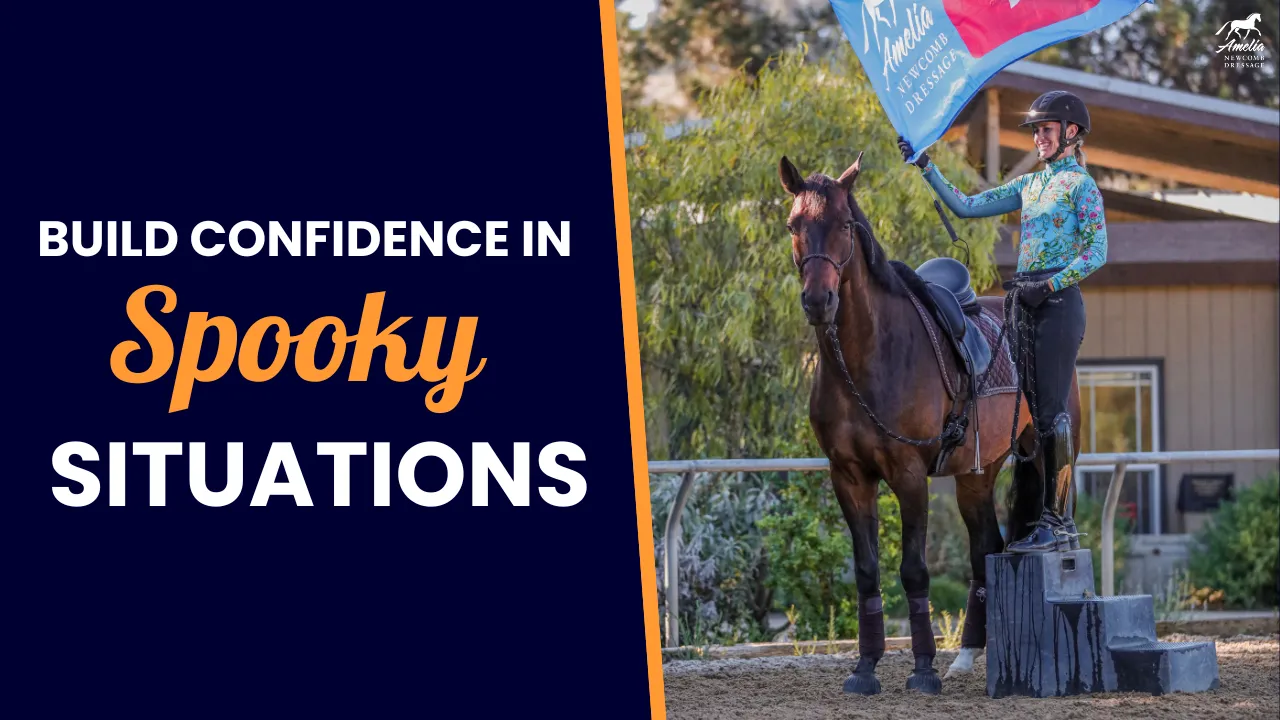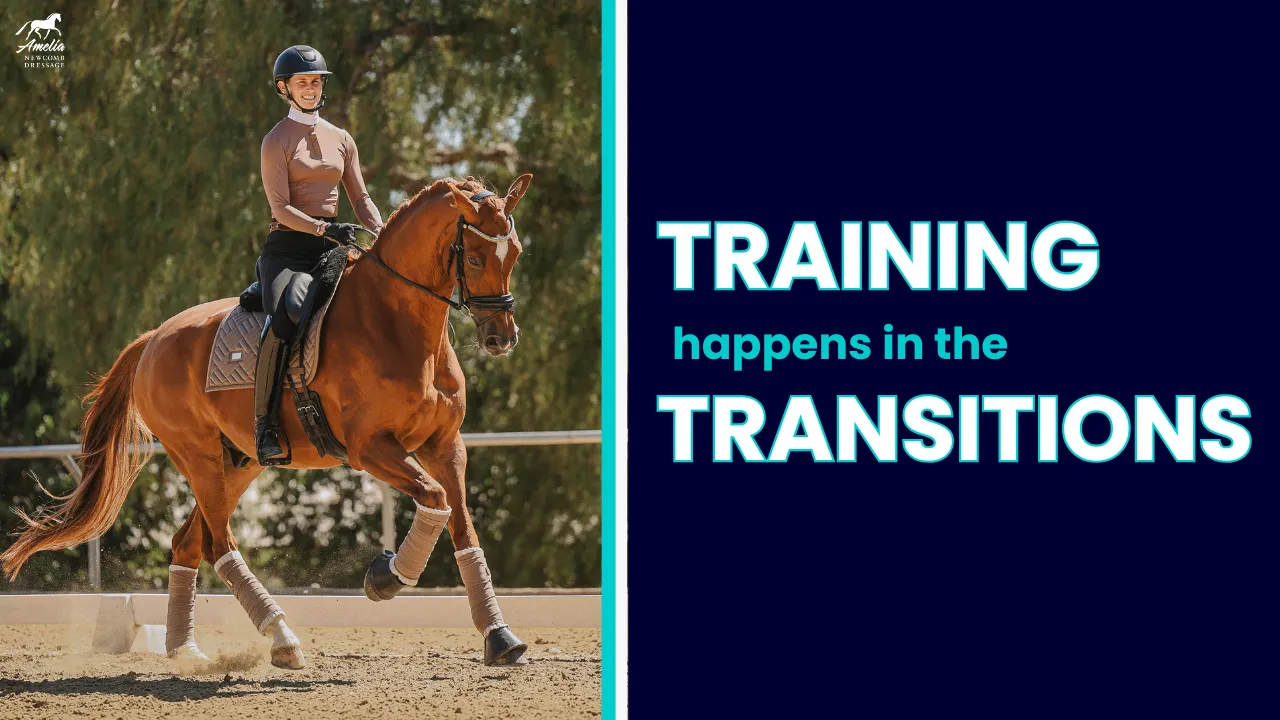Does your horse slam on the brakes and lose all forward momentum? Do you tip forward or lose your balance? This exercise will help. I learned the “Just Kidding” downward transition exercise from my colleague, Nicol Hinde. I love this exercise, and it has helped so many of my students to ride smooth, balanced, and uphill downward transitions. I know it will help you and your horse.
Why Downward Transitions Matter
Transitions are everything in dressage. They reveal whether your horse is on the aids, balanced, and properly connected through the topline. In a good downward transition, your horse should carry the energy from the hind leg through the back and stay round, supple, and responsive.
If your horse tends to fall onto the forehand, lose impulsion, this “just kidding” exercise is for you.
What Is a “Just Kidding” Transition?
A “just kidding” transition is exactly what it sounds like. You almost ask for a downward transition—but then surprise your horse by pushing them forward again. It’s a playful, pressure-free way to teach your horse to stay active and wait for your actual cue.
Here’s how to do it:
- Establish a Forward, Connected Trot:Start by riding a steady, active trot. Make sure your horse is in front of your leg and you have a nice, round connection.
- Think About a Walk Transition—but Don’t Do It:Begin to ride a downward transition by tightening your core and preparing your seat. But just as your horse starts to come back, say “Just kidding!” and push them forward into a trot again.
- Repeat a Few Times:Do several of these “almost walk—nope, trot!” moments in a row. This helps your horse stay engaged behind and think forward in every transition.
- Then, Do a Real Transition:Once your horse feels responsive and not too eager to stop, ride a full transition to walk, but make sure they stay active through the whole movement.
Don’t reward a lazy or sloppy transition. If they drop the energy or get too slow, send them forward again. Wait until your horse feels like they want to keep going, and then ask for the downward transition. That’s when the transition will be clean, soft, and balanced.
Final Thoughts
The key to this exercise is timing. Don’t transition to walk until your horse doesn’t want to walk. If they’re expecting it, you’ll lose the balance and energy. But if you keep them guessing with “just kidding” transitions, they’ll learn to wait for your aid—and stay active and forward the whole time.
If this sounds like something your horse needs, definitely give it a try. And if your horse tends to be on the lazier side, this is a game-changer.
Let me know in the comments if this technique helps your horse!
Happy Riding!
Amelia
P.S. Need more help with your transitions? Be sure to check out my Transitions Workshop for even more help. It’s full of step-by-step exercises and pre-recorded training videos to improve your transitions at every level.
